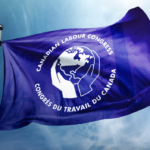Workers in the federal public service win the right to collective bargaining, including the right to strike
On February 23, 1967 the Public Service Staff Relations Act (Bill C-170) received royal assent after two long years of making its way through Parliament. The new law gave bargaining rights to workers in the federal public service – including the right to arbitration and the right to strike.
Workers in the federal public service were organizing themselves into unions for over 75 years before finally winning the same labour rights enjoyed by other Canadians. The first union, formed in 1891, was the Federated Association of Letter Carriers. In 1918, FALC lead postal workers in the very first countrywide strike of federal government employees, which, while illegal, won fairer wages and work hours for its members.
Unions were not legally recognized within the federal public service even in 1965, when another postal union, the Canadian Postal Employees Association, (the forerunner of the Canadian Union of Postal Workers), who represented inside workers went on a national ‘wildcat’ strike to protest poor working conditions and the lack of union recognition.
The early 1960s was a time of militancy and organizing for workers in the federal public sector, driven by the authoritarian management style of civil service managers and the lack of staff input into their wages and working conditions. The cancellation of wage increases –twice – by the Conservative government of the day was the final straw for many. Postal workers turned to the recently formed Canadian Labour Congress, which trained hundreds of new organizers within their ranks. This training was put to good use in the coming years.
The election of a new minority Liberal government in 1963, which had promised to bring collective bargaining rights to federal employees gave hope and spurred on organizing efforts. The Civil Service Association of Canada and Civil Service Federation along with the Professional Institute called for collective bargaining rights. Postal workers also wanted the right to strike, but the Federation was content to have disputes go to arbitration.
The Liberals, meanwhile, dragged their feet until July 22, 1965 when postal workers started an illegal strike that forced the government into action. It introduced C-170, the Public Service Staff Relations Act later that year. While there was widespread support for giving bargaining rights to federal employees, there was sharp division over giving them the right to strike.
Organizing and advocacy on the part of workers won the day, bringing significant changes to labour relations between the federal government and, eventually, provincial and territorial governments and their workers. On February 23, 1967 Canada became just the third country, joining Sweden and France, to allow its public sector workers to go on strike.
Federal government employees responded by joining unions in record numbers. The Civil Service Association of Canada and Civil Service Federation joined forces to create the Public Service Alliance of Canada (PSAC). Between them, they had majority support in most job categories of the federal government, which allowed them for the first time to address many issues for their members.







